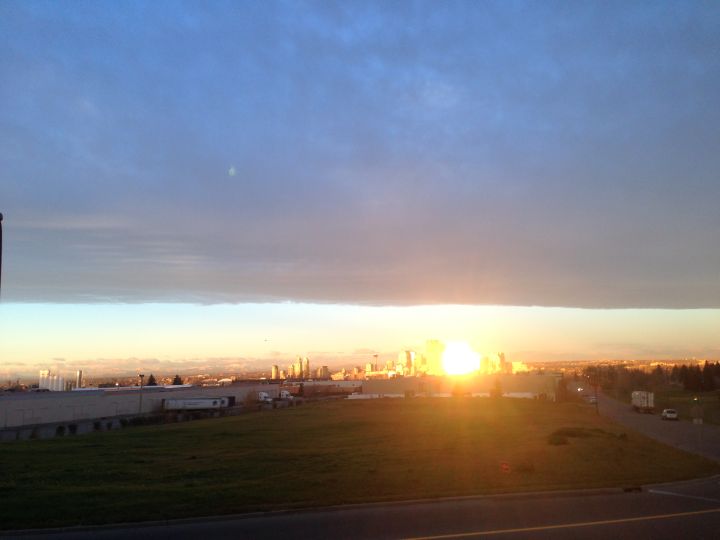Actor Leonardo DiCaprio has been the butt of some Albertans’ jokes over comments he made about the effects of climate change he claimed to have observed while filming in the province.

DiCaprio was quoted in Variety as saying “we would come and there would be eight feet of snow, and then all of a sudden a warm gust of wind would come”. He claimed residents said it had never happened before.
READ MORE: ‘It’s a Chinook’ – Albertans mock Leo DiCaprio’s climate change comments
But those warm gusts are common in Calgary and around the world – they’re called Chinook winds. In Alberta, it’s more common to experience them more often during El Nino seasons, which was what Alberta was experiencing during filming of The Revenant.
Chinooks occur on the lee side of mountain ranges, which is opposite to the windward side.
Global Calgary meteorologist Jordan Witzel said moist air drives up against mountain ranges. Once it rains or snows, the air is “emptied” of that moisture, and is then a drier air mass. The dry air then moves downhill on the lee side of the mountain range.
“The basic scientific principle at work is that air cools as it rises and warms as it descends, known as adiabatic cooling and warming,” Witzel said. “But dry air does all of this at a greater rate than moist air. Therefore, the moist air cools just a little as it rises on the windward side.”
Witzel said the then-dry air at the top of the mountain will get much warmer as it descends the lee side of the mountains, and that dry, warm air is a perfect setup for massive evaporation of any snowpack along the lee side of the mountain.
“Basically the air mass is thirsty. This happens in Alberta whenever a southwest-west wind pushes up against the Rockies. That wind direction is 90 degrees to our mountains and perfect for rising and falling along the divide.”
Witzel added some fun Chinook facts: the Santa Ana winds of California are the same thing, and in Europe, they’re called Foehn winds.
“They caused huge headaches for some military air operation during the Afghanistan war,” Witzel said.




Comments